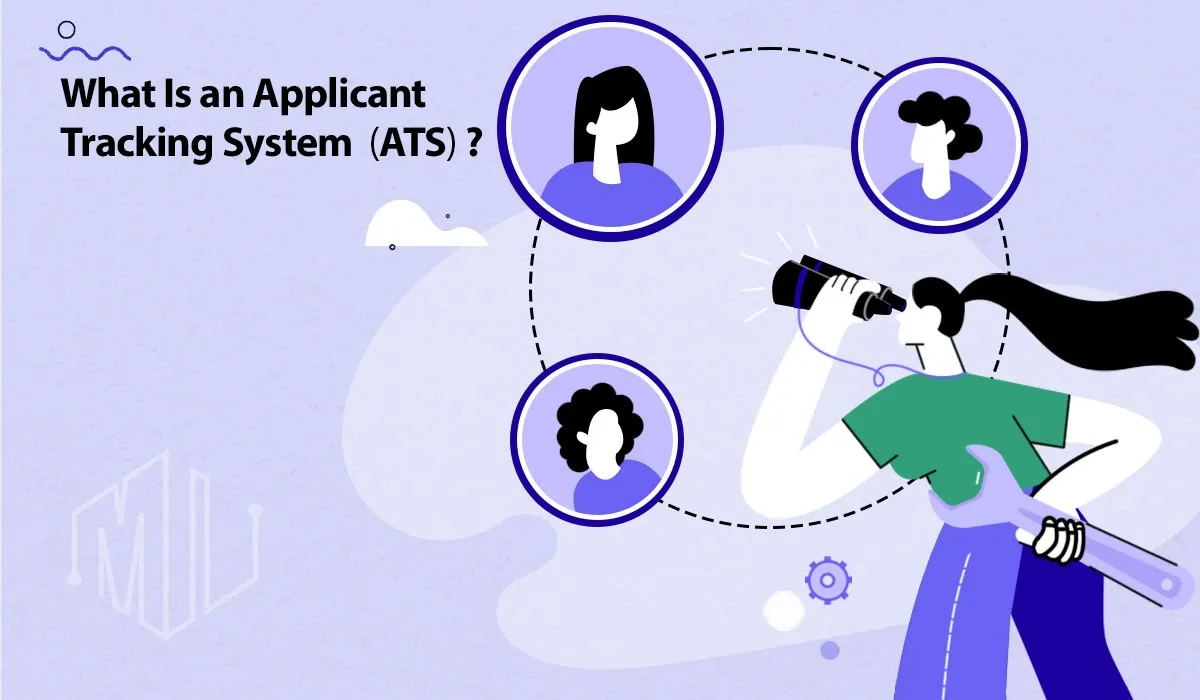What is an Applicant Tracking System (ATS) and How Does It Work?
Explore how an Applicant Tracking System (ATS) optimizes recruitment by managing postings, screening candidates, and improving hiring decisions and candidate experience.

Are you tired of submitting countless job applications and hearing nothing back? Have you ever wondered how employers filter through hundreds of resumes to find the perfect candidate? Look no further than the Applicant Tracking System (ATS), the behind-the-scenes software that has revolutionized the job application process.
Don't let the ATS stand between you and your next career move. Get ready to unlock the key to success!
✨ Unleash the Power of AI with MagicalAPI!
Whether you’re optimizing YouTube content, extracting LinkedIn data, or evaluating resumes, MagicalAPI is your one-stop solution! Discover the diverse range of AI services tailored to meet your every need. Dive in and elevate your digital experience today!

What is an Applicant Tracking System (ATS)?
An Applicant Tracking System (ATS) is a software application used by employers and recruiters to manage the hiring process and automated screening.
Applicant Tracking System acts as a database, allowing companies to collect, store, and organize job applications and candidate information. The primary purpose of an ATS is to streamline the recruitment process, making it more efficient and effective.
ATSs are designed to automate and simplify various tasks involved in hiring, such as resume parsing, job posting, candidate screening, interview scheduling, and communication. By centralizing and digitizing the hiring process, ATSs help save time and resources for both job seekers and recruiters.
How does an Applicant Tracking System work?
The process begins as soon as an individual submits a job application. The ATS springs into action, scanning and parsing the submitted resume. This essentially involves converting the resume into a format that the system can readily understand and store in its database.
Recruiters can then access this database to search for potential matches based on an array of filters. These could range from specific keywords and skills to former workplaces, years of work experience, or even educational institutions.
Keyword usage plays an extremely significant role within an Applicant Tracking System. The software heavily relies on these to sift through the deluge of applications it receives. Therefore, if a resume possesses more keywords from the job description, the system is more likely to flag it as a suitable match.
Additionally, the ATS serves as a comprehensive tracking tool, following the applicant's journey through the various phases of the hiring process. From the moment the application is submitted to the final hiring decision, every step is meticulously recorded by the ATS.
Benefits of using an ATS for job seekers
Job seekers can greatly benefit from the use of an ATS in several ways:
- Improved visibility: When you apply for a job through an ATS, your application becomes part of a structured database that recruiters can easily search and access. This increases your chances of being noticed and considered for relevant positions.
- Efficient application process: ATSs often allow job seekers to create profiles and store their information, making it quicker and easier to apply for multiple positions. You can also track the status of your applications, ensuring you stay informed throughout the hiring process.
- Tailored job recommendations: Some ATSs have advanced algorithms that can recommend relevant job openings based on your qualifications and preferences. This helps you discover new opportunities that align with your skills and career goals.
Benefits of using an ATS for recruiters
Recruiters also reap several benefits from utilizing an ATS:
- Time and cost savings: An ATS automates many time-consuming tasks, such as resume screening and candidate tracking. This frees up recruiters to focus on more strategic aspects of hiring, ultimately saving time and reducing costs associated with the recruitment process.
- Streamlined collaboration: ATSs facilitate seamless collaboration among hiring teams. Recruiters can easily share candidate profiles, notes, and feedback with colleagues, enabling efficient decision-making and ensuring a smooth workflow.
- Data-driven insights: By using an ATS, recruiters gain access to valuable data and analytics that provide insights into recruitment metrics, such as time-to-hire, source of hire, and candidate pipeline. These insights enable recruiters to make data-driven decisions and optimize their hiring strategies.

Common features of Applicant Tracking Systems
While the specific features of an ATS may vary depending on the provider and the organization's needs, there are several common functionalities that most ATSs offer. Let's explore some of these features:
- Resume Parsing: ATSs use advanced parsing technology to extract and categorize relevant information from resumes, such as contact details, education history, work experience, and skills. This feature eliminates the need for manual data entry and ensures accurate and consistent data capture.
- Keyword Optimization: ATSs enable employers to define specific keywords and phrases that are relevant to the job requirements. The system then scans resumes for these keywords and ranks candidates based on their keyword match. This feature allows employers to quickly identify the most qualified candidates without manually reviewing every resume.
- Automated Screening and Ranking: ATSs automatically screen and rank candidates based on predefined criteria, such as education, experience, and skills. This feature saves recruiters time by eliminating the need to manually review each resume and ensures a fair and consistent evaluation process.
Read More: Resume Parser vs. Manual Resume Screening: Which is better for your business? - Collaboration Tools: ATSs facilitate collaboration among hiring team members by providing a centralized platform for sharing candidate information, feedback, and interview schedules. This feature improves communication and streamlines the decision-making process.
- Integration with Job Boards and Career Sites: Many ATSs offer integration with job boards and career sites, allowing employers to automatically post job openings and receive applications directly into the ATS. This integration eliminates the need for manual data entry and ensures a seamless candidate experience.
- Reporting and Analytics: ATSs provide reporting and analytics features that allow employers to track recruitment metrics, such as time-to-fill, source of hire, and candidate conversion rates. These insights help recruiters measure the effectiveness of their recruitment strategies and make data-driven decisions.
Tips for Optimizing Your Resume for Applicant Tracking Systems
Now that we understand the inner workings of an ATS, it's time to explore strategies for optimizing your resume to increase your chances of passing the initial screening. Here are some tips to consider:
- Use Relevant Keywords: Tailor your resume to include keywords and phrases that are closely aligned with the job requirements. Carefully review the job description and incorporate relevant terms throughout your resume, especially in the skills and experience sections. However, avoid keyword stuffing, as it may appear unnatural and hurt your chances of passing the ATS screening.
- Format your Resume Appropriately: Use a clean and well-structured format for your resume. Avoid using overly complex layouts, tables, or graphics that may confuse the ATS parsing algorithm. Stick to standard fonts and ensure that your resume is compatible with ATSs by saving it in a universally readable format, such as PDF or plain text.
- Include a Professional Summary: Begin your resume with a concise professional summary that highlights your key qualifications and achievements. This section serves as a snapshot of your skills and experience, making it easier for the ATS to identify your suitability for the role.
- Provide Detailed Work Experience: When listing your work experience, include specific details about your responsibilities, accomplishments, and the results you achieved. Use action verbs and quantify your achievements whenever possible. This helps the ATS understand the relevance and impact of your previous roles.
- Optimize your Education and Skills Sections: Clearly state your educational qualifications and any relevant certifications or degrees. In the skills section, include both hard and soft skills that are relevant to the job. If possible, align your skills with the specific keywords mentioned in the job description.
- Avoid Unnecessary Formatting: Keep your resume clean and simple by avoiding unnecessary formatting elements, such as tables, text boxes, or decorative borders. These elements may confuse the ATS and cause parsing errors.
- Proofread your Resume: Ensure that your resume is free from spelling and grammatical errors. ATSs can detect such mistakes and may negatively impact your chances of passing the screening process.
- Customize your Resume for Each Application: Tailor your resume to each job application by highlighting the most relevant skills and experiences. While it may be tempting to use a generic resume for multiple applications, investing time in customizing your resume can significantly increase your chances of being shortlisted.
By following these tips, you can optimize your resume for ATSs and increase your chances of passing the initial screening process. Remember, the goal is to strike a balance between creating an ATS-friendly resume and showcasing your unique qualifications and experiences.
Tips for job seekers to navigate the ATS
Navigating the ATS as a job seeker can be challenging, but with these tips, you can increase your chances of success:
- Tailor your application: Customize your resume and cover letter for each job application to highlight your relevant qualifications and experiences. This increases the likelihood of your application passing through the ATS screening process.
- Research the company and job description: Gain a deep understanding of the company's values, culture, and the specific requirements of the job you are applying for. This will help you tailor your application to resonate with the employer's needs.
- Network and seek referrals: In addition to applying through the ATS, leverage your network and seek referrals from professionals in the industry. Employee referrals often carry more weight in the hiring process and can help bypass the initial ATS screening.
- Follow application instructions: Pay close attention to the application instructions provided by the employer. Failure to follow instructions may result in your application being automatically rejected by the ATS.
- Keep your application concise and relevant: ATSs prioritize relevant information. Keep your resume and cover letter concise, focusing on the most important qualifications and experiences related to the job you are applying for.
- Use online resources and tools: Utilize online resources and tools that provide insights into optimizing your resume for ATSs. These resources can provide valuable guidance on how to structure your resume and identify relevant keywords.
Tips for recruiters to make the most of an ATS
As a recruiter, you can maximize the benefits of an ATS by following these tips:
- Define clear job requirements: Clearly define the qualifications, skills, and experience required for each job posting. This will help the ATS accurately match candidates and streamline the screening process.
- Craft compelling job descriptions: Write clear and engaging job descriptions that accurately reflect the responsibilities and expectations of the role. Use relevant keywords to attract qualified candidates and improve the accuracy of the ATS matching process.
- Leverage screening questions: Many ATSs allow you to include screening questions in the application process. Use these questions strategically to filter out unqualified candidates early on and save time during the screening process.
- Regularly review and update search criteria: Regularly review and update the search criteria in your ATS to ensure you are capturing the most relevant candidates. This includes refining keyword lists, adjusting qualifications, and considering alternative search terms.
- Provide timely communication: Use the ATS to send automated updates and notifications to candidates throughout the hiring process. Prompt communication helps maintain a positive candidate experience and enhances your employer brand.
- Leverage analytics and reporting: Take advantage of the analytics and reporting features of your ATS to gain insights into your hiring metrics. Analyze data such as time-to-fill, source of hire, and candidate conversion rates to identify areas for improvement and optimize your recruitment strategies.
Conclusion
The Applicant Tracking System (ATS) has become an integral part of the modern recruitment process. By understanding how an ATS works and implementing strategies to optimize your resume and application, job seekers can increase their chances of getting noticed by employers. Recruiters, on the other hand, can leverage the power of ATSs to streamline their hiring process, save time and resources, and make data-driven decisions.
However, the effectiveness of an ATS is not just in its technology but also in how well it integrates with other tools that support the recruitment process. This is where services like MagicalAPI's Resume services come into play. Our solutions are designed to work seamlessly with Applicant Tracking Software, enhancing its capabilities by providing advanced resume parsing and scoring functionalities. With MagicalAPI, businesses can further refine their candidate selection process, ensuring that they not only attract but also accurately assess and onboard the very best talent.
MagicalAPI's Resume services, including Resume Parser, Resume Score, and Resume Review, offer a sophisticated layer of analysis to the recruitment process. By utilizing these services, recruiters can gain deeper insights into candidates' abilities, potential, and fit for the role. This not only improves the efficiency of the hiring process but also significantly enhances the quality of each hire.
FAQ
What is an Applicant Tracking System (ATS)?
An Applicant Tracking System (ATS) is a software application used by HR departments and recruiters to manage the hiring process digitally. It helps streamline recruitment by handling job postings, receiving applications, parsing resumes, and tracking candidates through various stages of the hiring process.
How does an ATS work?
An ATS works by automating many aspects of the hiring process. It can create and post job listings, screen resumes using algorithms to match them with job descriptions, schedule interviews, and communicate with candidates.
Who can use an ATS?
ATS systems are used by companies of all sizes, from small businesses to large enterprises. They are particularly useful for organizations that handle a high volume of applications, helping them manage and streamline their recruitment processes efficiently.

Join to our community
By joining our Discord server, get assistance, and troubleshoot any challenges you may encounter while using our services.
Join us on Discord




